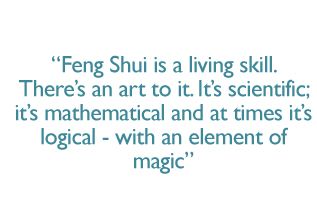I have always heard of Feng Shui, but I was never a believer. I thought it is superstitious until someone with a kind heart gifted me a Feng Shui book by Cathleen McCandless, one of the top experts, authors, and teachers on the subject of Feng Shui. It was quite an eye-opener. Contrary to what I have been hearing, Feng Shui is neither a belief, religion, system, superstition, nor magic, and that you don’t need to believe in it in order for it to work.

Being in the business of managing and renting out luxury properties and having stayed at many, I could tell in an instant if I feel good or not about the place. After all, this is what I’m selling to our clients – a luxury vacation home rental where our guests would feel good, relax, feel the positive vibe, and have fun. So what are some signs that a home has good Feng Shui?
1. LET YOUR FEELINGS BE YOUR GUIDE
Not all of us have an intuitive sense of what good design is, but we all know how we feel within a certain setting. Feng Shui is about creating space that feels as good as it looks. Pay attention to how you feel as you enter and walk around the home. If your body and mind relax into a greater sense of well-being, it is a good indication of the Feng Shui of that place.
2. DECOR & INTERIOR DESIGN
I used to think that if a home is decorated with Chinese objects, signs, and artwork, then it has good Feng shui. Well, it’s not really. Feng Shui can be applied to any decor or design whether it’s traditional, eclectic, or modern contemporary. I’ve seen places that look beautiful but not comfortable and also been to places that are both beautiful and comfortable.
Good Feng Shui is not just about a home looking attractive, but it should also give that special atmosphere of relaxation and comfort. If your body feels safe, your mind can be set free, and your senses delight in all that the home has to offer, most likely it was created with good design principles and Feng Shui combined.
3. NATURE INTEGRATION INSIDE A HOME
Human beings are dependent on nature and natural resources to stay alive. Homes that include natural shapes, textures, images, colors, and materials like wood (including plants and flowers) in their design feel better than homes that do not. If nature is integrated into a place, it strengthens that instinctive connection to the natural world.
4. USE OF LIGHTING – NATURAL & ARTIFICIAL
One of the ways to determine whether a home has good Feng Shui is how much sunlight travels through the place throughout the day. Is it too much, too little, or just enough? What’s good or bad depends on the climate of the location. Light patterns and lighting influence strongly the way people experience a home.
The use of artificial lighting in the absence of sunlight can also greatly impact our physical and mental health. So it is important that they are properly installed in the right places. For instance, at night, using artificially simulated, full-spectrum lighting may be too bright if you want to have a relaxing evening, so dimmer switches or bulbs with lower wattages must be available to soften the evening light.
5. PAINT & COLOR
A home does not need to be painted in red, gold, or blue, in order for it to have a good Feng Shui. Color choice is highly subjective and we all have our own preferences influenced maybe by cultural backgrounds, gender, past experiences, and many other factors. If a home is painted with the color that you love and if it makes you happy, then it is good Feng shui.
6. YIN & YANG
Yin and Yang are about balance. For example the use of colors (dark & light), the size of the room (small & large), furniture lines (curved & straight), materials (from nature & man-made), ceiling heights (low & high), natural light (low & bright), and the list could go on. So if a home has good Feng Shui, it should just feel right. You can’t have only too much or too little, or both should exist to achieve the balance.
7. ARTWORK
Although art preferences vary depending on each person’s taste and depending on the design of the house, there are some basic rules on how it should be used in a home for a good Feng Shui.
First thing, artwork should be appropriate in size for the wall, room, and furnishings of a home. For narrow walls, smaller pieces of artwork is recommended, while for wider walls, larger pieces can be used. They should be hung at the correct height, at least at the eye level of an average person. If you see paintings and photographs of landscape especially in a room that lacks a beautiful view out of the window, it can be an indication of good Feng Shui.
8. KID-FREE ZONE
This does not mean that kids are not allowed at home. This only means that children’s possessions do not need to be seen in every room of the house. Kid’s stuff should be kept in their own area, and keep every other part of the home as it is designed to be – a kitchen, living room, master bedroom, family room, and etc.
9. SCENT
Feng Shui is a holistic process. One important aspect of determining good Feng Shui is whether the home has any health dangers. Air fresheners are now widely used not just at home but even in offices. We all know that these artificially scented products are stuffed with toxic chemicals that pollute the air you breathe.
A home with good Feng shui uses products that are natural and safe. Aromatherapy, using essential oils is one perfect example of a natural scent that not only smells good, but can also improve one’s mood, health, and spirit.
10. CLUTTER
Clutter can make you feel depressed, unmotivated, or feel a lack of energy. A home must be free of clutter in order to feel and allow its balance and flow of positive energy.






